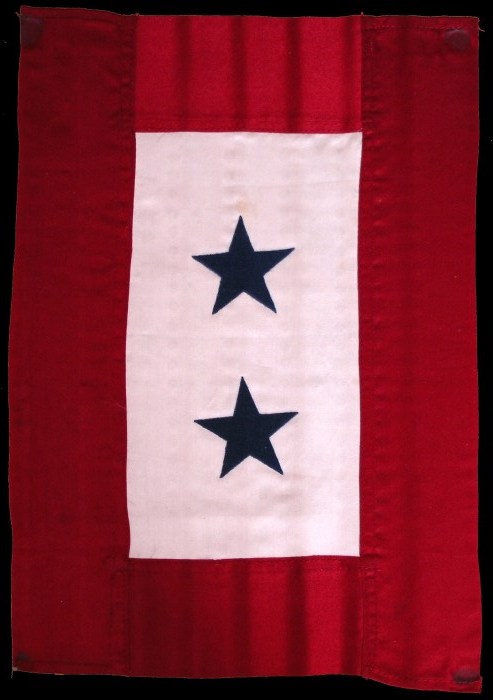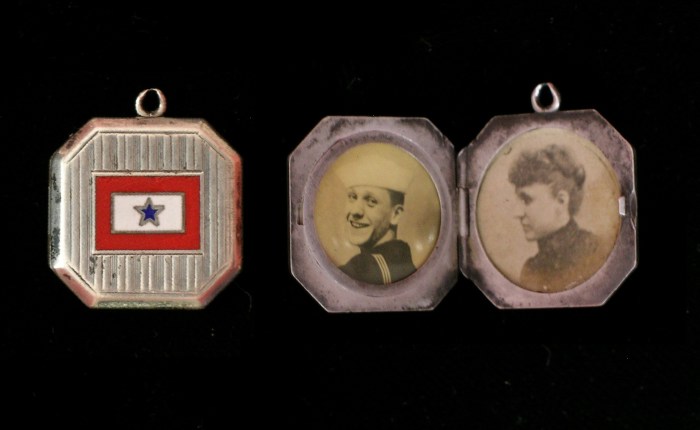One thing that surprised me in the days following Sarah Palin’s emergence in September was the number of folks from among her base who did not recognize the pin she wore at the GOP convention and on her meet-world-leaders day at the U.N.: many wondered if she was wearing an Israeli flag pin, when actually it was a service banner, an emblem with a tradition established during WWI. Three service-banner items are found among the memorabilia in our family, including (I just recently found) a pin like that worn by Governor Palin.

This homemade cloth banner, about 15″ high with two stars denoting two sons in service, belonged to my grandfather’s parents, Henry Barnes Taylor and Mildred Matlack Taylor, when their two children, Marvin and Marshall, were both serving in 1917/1918. Marvin went to France with the U.S. Army 2d Division; Marshall remained stateside in another branch. This was likely displayed in a window. It is now pasted into the large scrapbook that holds my grandfather Marvin’s letters from France and assorted clippings and memorabilia.

Many of my grandfather Marvin’s letters home were written to his fiancee, Emma Schmitt, whose grandparents had all emigrated from Germany. Emma’s only brother, George (who anglicized his name from Schmitt to Smith), was also in the service—in the Navy as you can see here, in his mother’s sterling service banner locket which has his photo next to her own. The locket shows signs of long wear, especially in the loop at top, worn dangerously thin. Finally, my mother’s father Carle Tucker was in the Army too, and his mother Nellie Mae (Lane) Tucker was likely the owner of this simple enameled pin, also rubbed from long wear (and now missing its hinged pin):

Disused in the Vietnam era, service banners have come back into fashion only in the last twenty years. I wouldn’t wonder if ‘service banner’ artifacts developed their own collecting niche. For me, the fact that these were so carefully kept long after the war (and long after each of the four military sons had come home safely) incidates how important this period of sacrifice and uncertainty was for the families. For descendants interested in family history such artifacts remind us how much military service was and is a family concern and not just an individual one.

Post a Comment